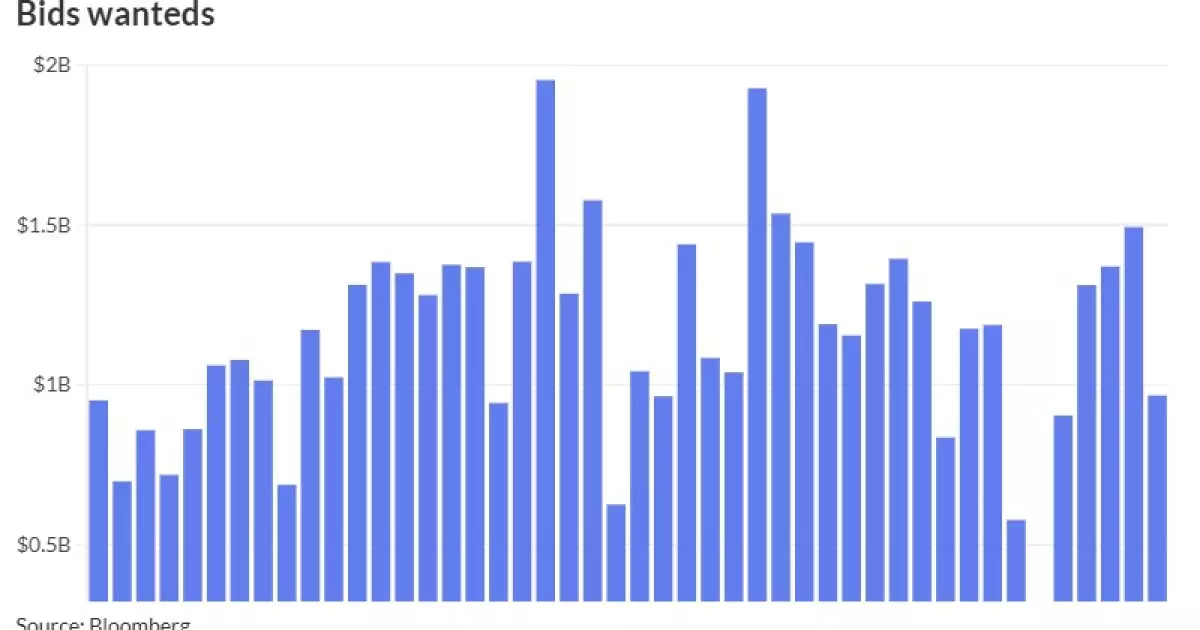As the municipal bond market navigates through fluctuating dynamics, recent trends suggest that investors are recalibrating their approaches in response to a larger slate of new issues on the horizon. Over the recent weeks, municipal bonds have exhibited minimal movement, with some segments revealing slight weakening. Additionally, the U.S. Treasury (UST) yields have shown notable losses across different maturities, contributing to a cautious sentiment among market participants. The municipal yield curves have largely remained stable, with slight variations observed: a basis point or two of weakness can be noted depending on the scale of assessment. Furthermore, equity markets have closed lower, indicating a broader hesitance in financial markets.
Shifting focus to municipal bond ratios, data from sources like Refinitiv Municipal Market Data indicate an ongoing decline in ratios between municipal and UST yields. As of the latest reports, for example, the ratios for short-term to long-term bonds displayed figures such as 61% for the two-year, 62% for the five-year, and up to 81% for the 30-year bonds. Such ratios highlight the tightening margins that investors are becoming accustomed to in the current financial landscape.
This week has seen significant activity in the municipal bond market, with one of the largest transactions being a $2.158 billion issuance of state sales tax revenue refunding bonds by Morgan Stanley for the Dormitory Authority of the State of New York. These bonds have been well-structured, with various maturity options presenting yields between 2.65% for shorter durations and 4.12% for longer terms. Market analysts, including Pat Luby from CreditSights, speculate that the limited New York paper issuance this November—registering at a mere $266 million—will drive demand for these bonds.
Additionally, major offerings include Massachusetts’ high-grade bonds set to total $800 million in competitive sales. Known for a strong economy, Massachusetts general obligation bonds are a staple in many municipal portfolios. However, with the current benchmark yields hovering above the 3% mark, market participants are proceeding with caution, anticipating limited opportunities for outperformance in this specific asset class.
As December unfolds, the performance of municipal bonds has kept in the green, albeit modestly, with the Bloomberg Municipal Index reflecting a month-to-date increase of approximately 0.33%. Year-to-date, municipal bonds have been more favorable, sitting at around 2.88%. Historical data corroborates that December and January tend to be robust periods for municipal performance, contributing significantly to annual returns over the past five years. Notably, insights from experts at BlackRock signal a measured approach, acknowledging the recent rally in valuations.
Despite a generally optimistic outlook for municipal bonds, market strategists emphasize the need for a balanced approach. Following a notable rally, they suggest sticking to a neutral duration stance while adopting a barbell strategy that combines exposure at both the front-end and the intermediate segments of the yield curve. This strategy is designed to optimize income generation while mitigating risks associated with potential interest rate fluctuations.
As we approach the end of the year, the primary market is gearing up for a series of significant bond issuances. The California Community Choice Financing Authority is expected to introduce $1.25 billion worth of clean energy project revenue green bonds, which may attract a variety of investors due to the growing emphasis on sustainable investment. Other notable issuances include the Chicago Transit Authority, which is set to offer close to $570 million in sales tax receipts revenue bonds, and multiple offerings from state and local authorities across the country.
As competitive bidding takes center stage, it remains crucial for investors to stay attuned not only to the available offerings but also to the trends influencing market performance. The upcoming auction by Massachusetts, which includes various maturities, reflects a significant event to monitor closely, especially among institutional investors keen on securing portions of high-quality bonds.
Navigating the municipal bond market requires careful analysis and a proactive approach to emerging opportunities. As investor dynamics shift and external pressures evolve, it is imperative for market participants to remain engaged with ongoing trends, especially given the implications of supply and demand scenarios. Those looking to capitalize on this landscape can benefit from a diversified portfolio, leveraging both high-yield and investment-grade securities while maintaining a vigilant eye on market fluctuations. As we close out 2023, the state of municipal bonds appears cautiously optimistic, and strategic decisions will play a pivotal role in shaping investment outcomes as the new year approaches.

